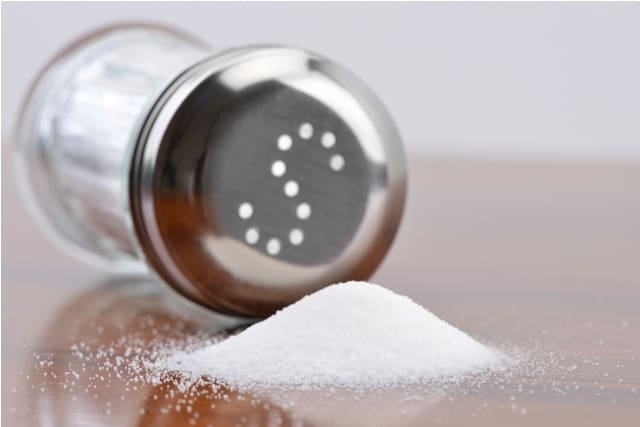On Wednesday, September 25th I will be co-hosting our next live webinar with scientific advisor, Kit Broihier, on the use of sodium in today’s American diet. This webinar will add to the series of presentations we have made that focus on nutrition, health and the food industry. Preparing for it has forced me to examine the role that salt plays in our diet, how it drives our food purchases and the difficult it task of attempting to reduce sodium in the typical American diet.

Over 30 years of warnings about the connection between salt and chronic disease along with calls to reduce it in our diet have led to the current recommendation to not exceed 2,300mg of sodium per day (less for those at risk). Despite this, the average American consumes 3400mg of sodium a day, much of which “sneaks” in without their knowledge.
Many people don’t use a salt shaker or add salt to their cooking. However, what most don’t realize is just how much is already in the foods they eat every day. In fact, foodmanufacturing.com reports that foods labeled as reduced sodium actually declined from 2010-2011. Interesting to note that the same market research indicates that 59% of consumers have purchased low sodium foods and would purchase them again.
So why is the number of reduced-sodium foods on the shelves declining despite consumer interest in purchasing them? It comes down to one thing…taste. Consumer surveys conducted by the International Food Information Council (IFIC), consistently show that taste is the number one driver of food purchases and that consumers will use put taste above all else despite knowing what is recommended for them. Add this data to the bottom line needs of a food manufacturer and you have the conflict presented to us on grocery store shelves across America.
Unlike with sugar and fat, we have not yet developed a salt substitute that maintains the taste we have grown to love in our favorite savory foods. After all, it is the salt that keeps us coming back for just one more chip and that we crave when we want our much loved snacks. The bottom line: salt makes things taste good.
Our food and health industries are at a crossroads; presented with a complicated issue to untangle. According to the 2010 Dietary Guidelines for Americans, “An immediate, deliberate reduction in the sodium content of foods in the marketplace is necessary to allow consumers to reduce sodium intake.” Four years later, some food manufacturers are actually doing this. However, ironically, they are doing so silently, with no marketing or labels, for fear of losing customers who think the taste they know and love will be negatively affected.
What is next? Do health practitioners need to send a louder message to consumers of the need to put health first? Is the food industry doing enough to create foods that offer big taste with little salt? Since most of the salt consumed is through processed and convenient foods, how can we make consuming fresh foods and cooking convenient again?
These are the questions swirling in my mind as I prepare to present our next webinar on Wednesday, September 25th at 2pm EST. As with all of our webinars, we invite you to join the conversation on twitter #GSSodium and to share your thoughts on this timely conversation by registering today.